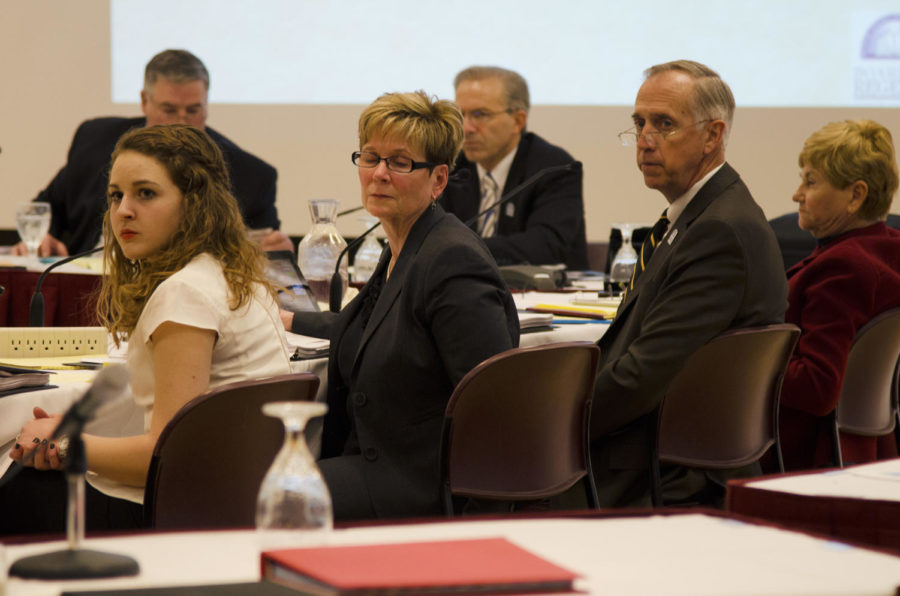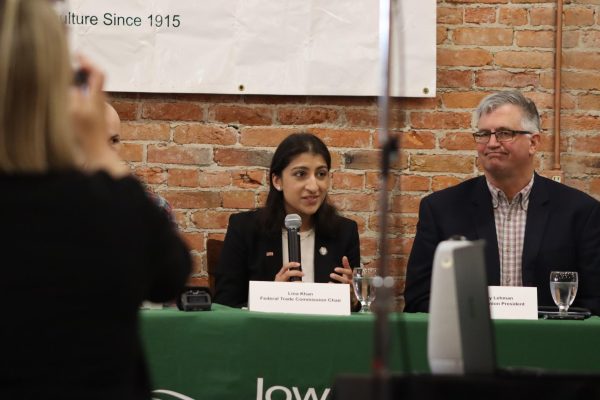Board of Regents discuss residence, retention rates
March 14, 2013
The Iowa Board of Regents was tasked with hearing a wide range of topics, including the concern of retention rates, residence reports and economic growth at Iowa State.
The Regents, who met in the Gold Room of the Memorial Union on March 13, 2013, heard reports concerning the three Regent universities’ retention and graduation rates.
Iowa State showed a one-year retention rate of 85.8 percent for students who entered the university in 2011. This places Iowa State above the 76.7 percent national average, as well as above tIowa at 85.5 percent and Northern Iowa at 81.3 percent.
“We’re largely a STEM university with some very difficult majors,” said President Steven Leath at the meeting.
Leath said that 80 percent of freshman students are involved in learning communities, and those learning communities show a retention rate of 88 percent.
Leath pointed out that studying abroad, internships and majors that are five-year programs, such as architecture, all increase the average number of years till a student may graduate.
Iowa State also introduced the Student Experience Enhancement Council in November 2012, which Leath said may help to improve student’s time at the university and continue to improve retention rates.
Pete Englin, the director of residence for Iowa State, presented a residency report to the Regents.
Englin explained that he has received several requests from members of the Government of the Student Body, Inter-Residence Hall Association and the Graduate and Professional Student Senate.
These requests included not using the dens to house students in the upcoming years, having a 3 percent vacancy rate and tailoring some living spaces to graduate students.
“Meeting any of these requirements, they don’t look very good,” Englin said.
“No one is required to live on campus, so the greatest compliment we can receive is when students choose to return. Coupled with strong entering classes, we have high demand. … The only way we accomodate some of these additional priorities is if demand decreases or we add housing capacity.”
Englin said that the Department of Residence wants to do their best to keep “serving students well.”
However, he also said that there is no timetable or current plan on when they will be able to meet the requests, other than the new additions to Frederiksen Court.
Iowa State received a 2.86 percent interest rate for bonds to pay for the Frederiksen Court expansion.
“Given that 2.86 percent is a very favorable interest rate, we’re elated for our students,” Englin said. “It independently affirms that our partnering with student leaders in our financial planning has us well positioned for the future.”
Miles Lackey, associate vice president and Leath’s chief of staff, presented on Iowa State’s future economic capabilities, calling the university an “economic powerhouse.”
Lackey focused on an “economic stool,” with the three legs being work force, capital and innovation.
Craig Lang also took the opportunity to recognize and introduce Dr. Subhash Sahai, who has been appointed as a new member of the Regents and is waiting approval for the position from the Iowa Senate.

















